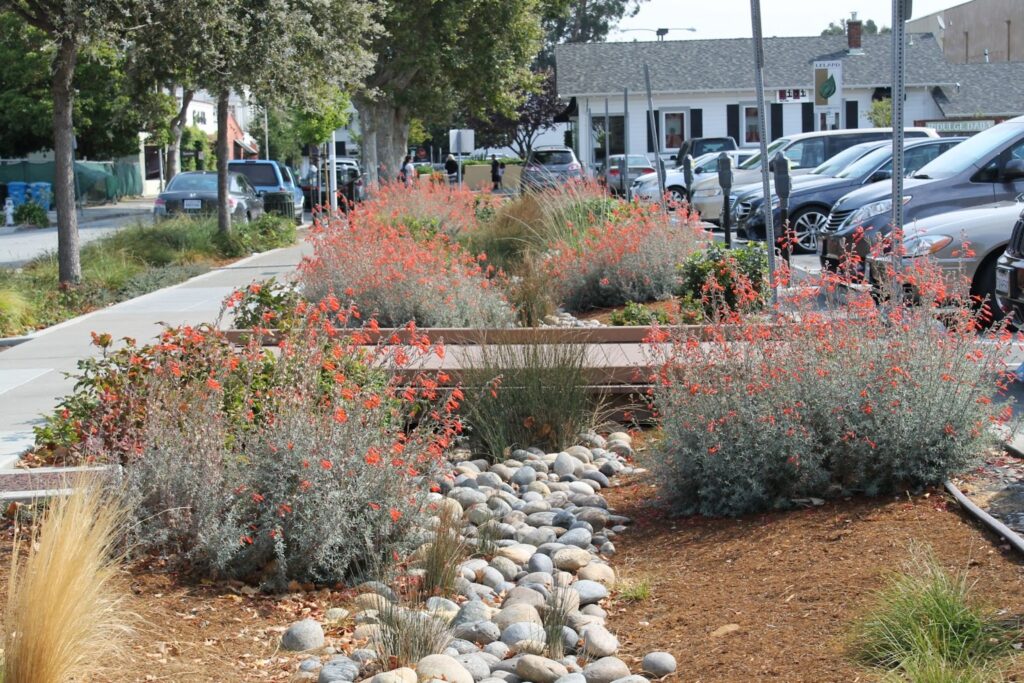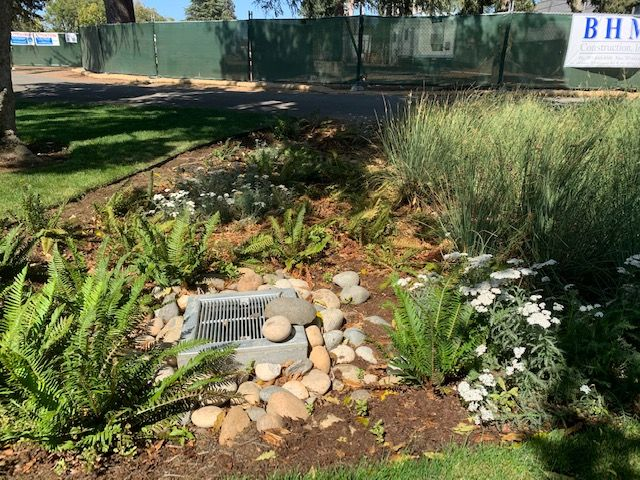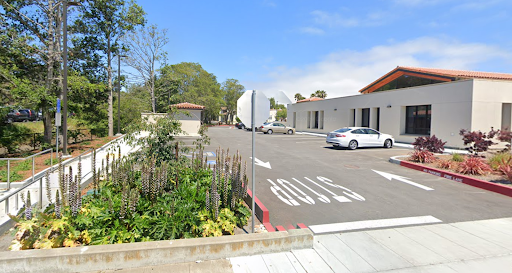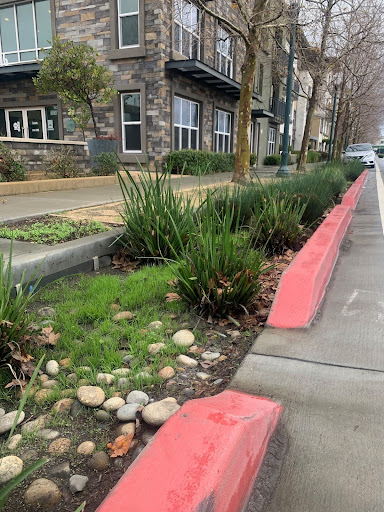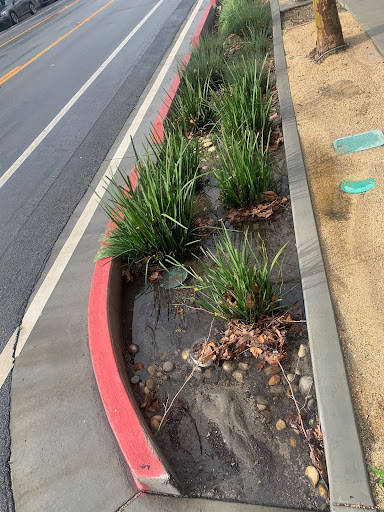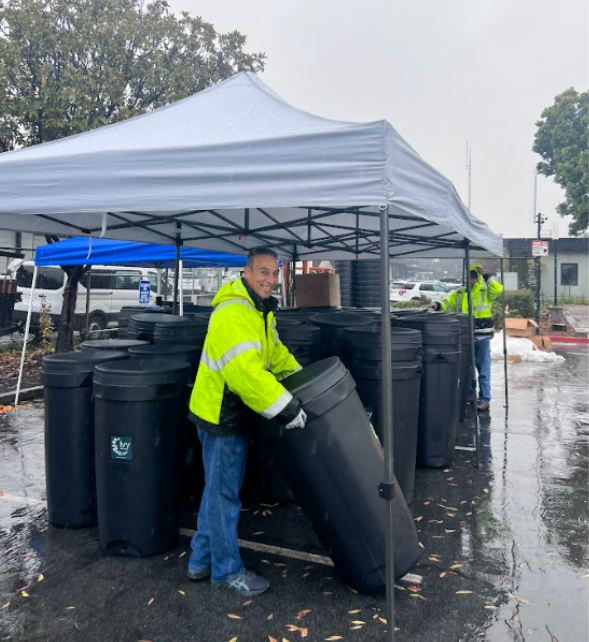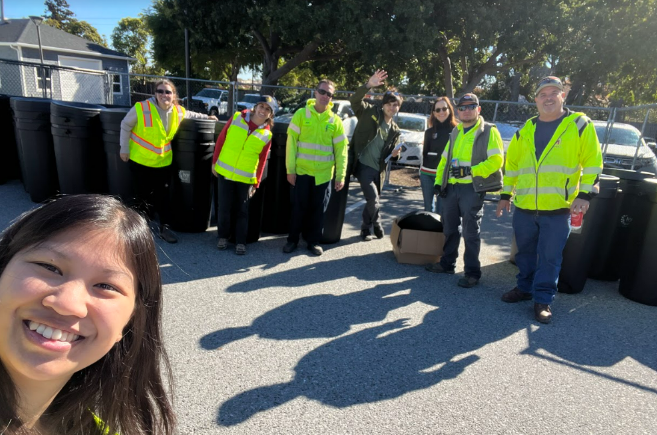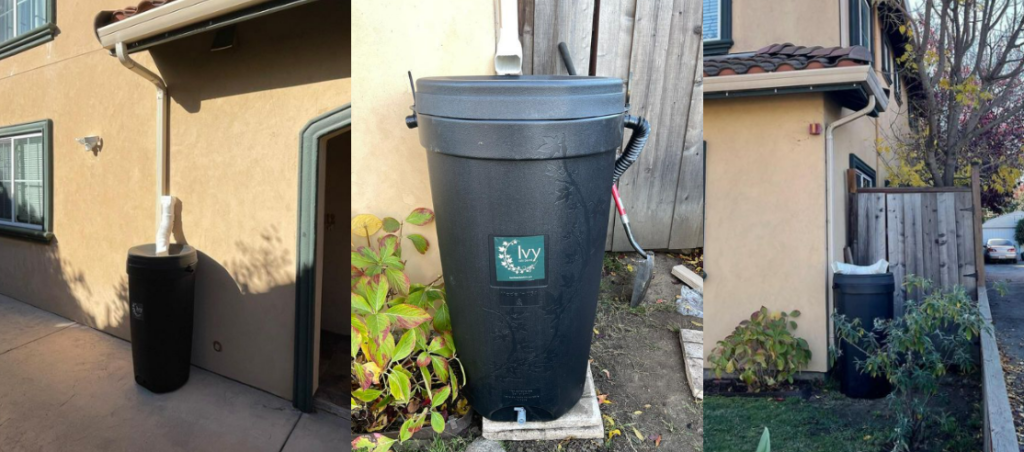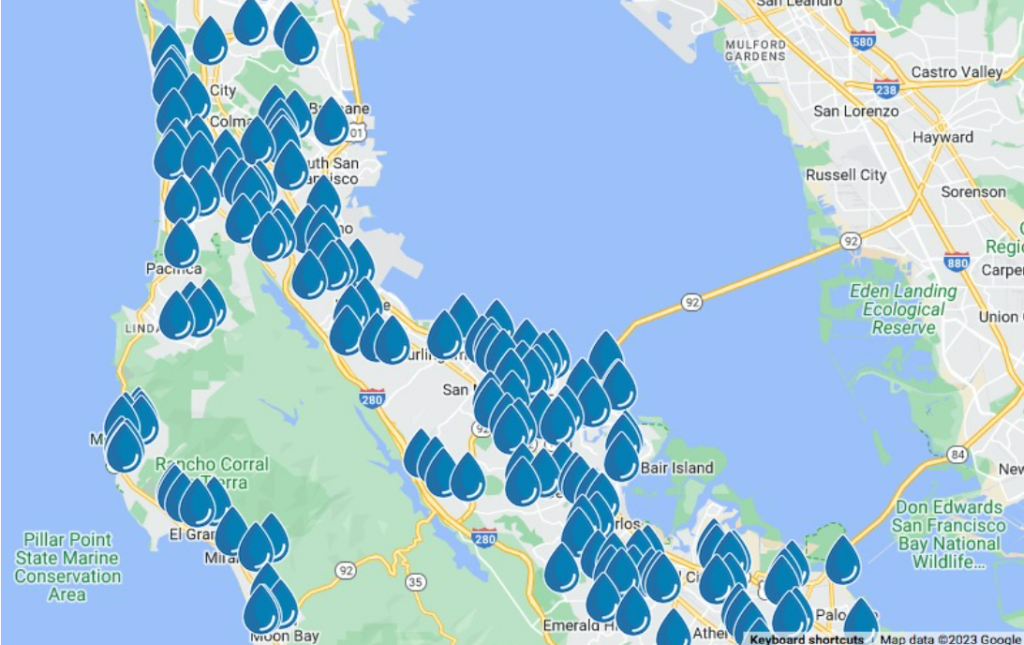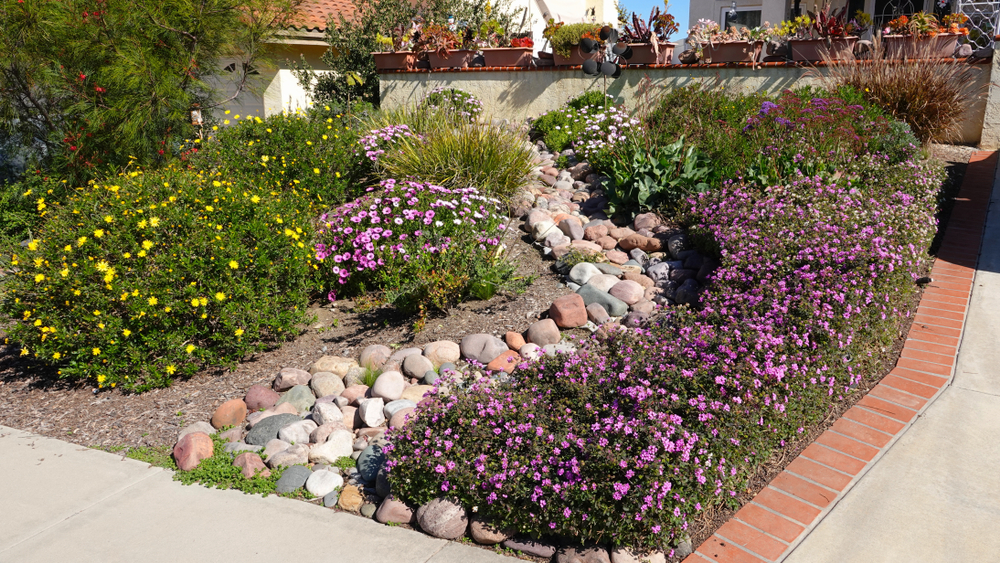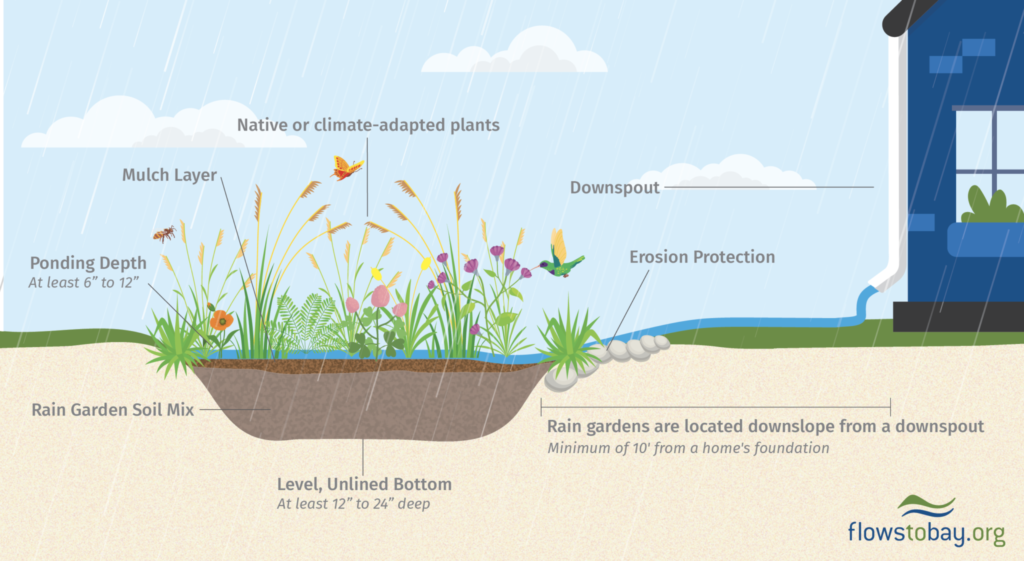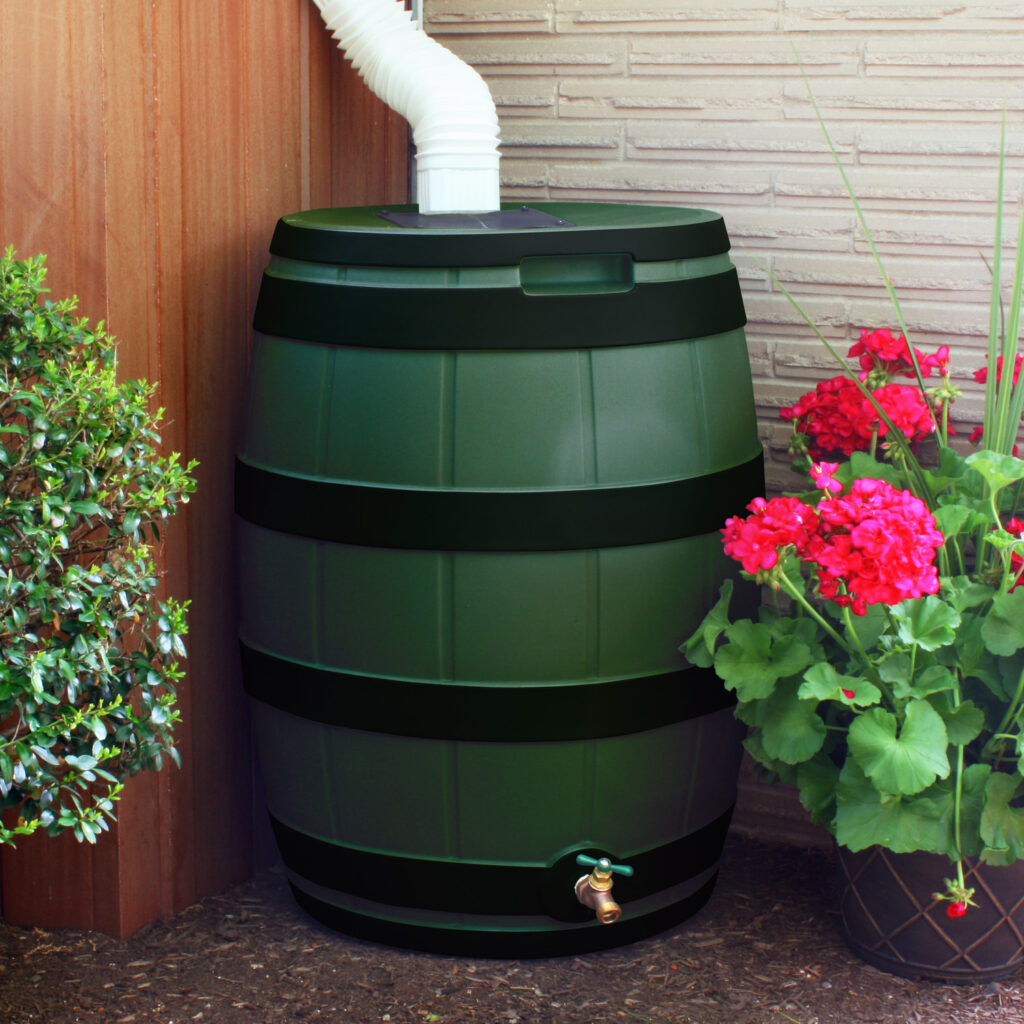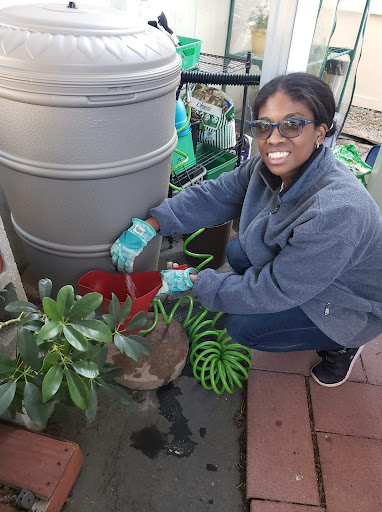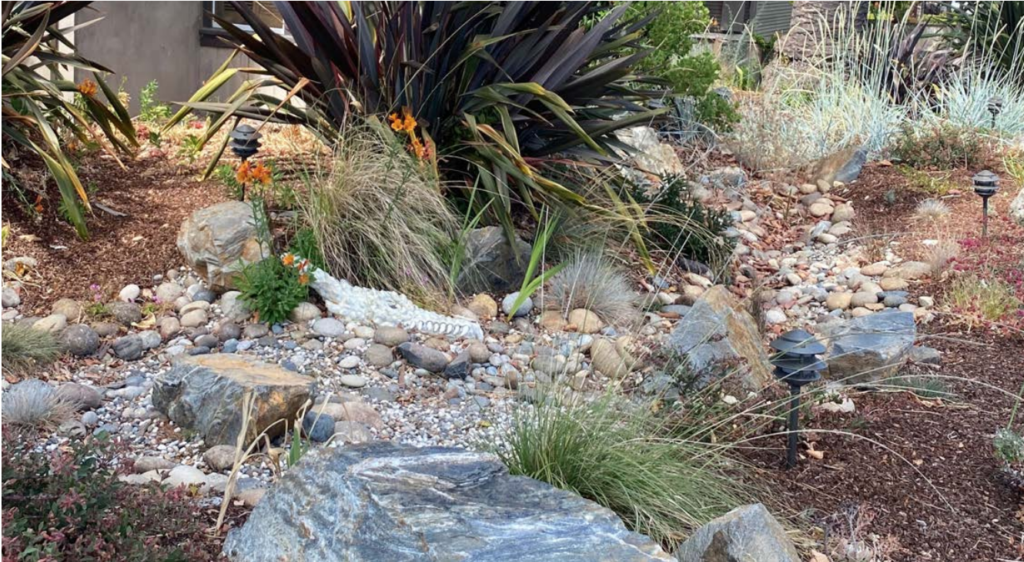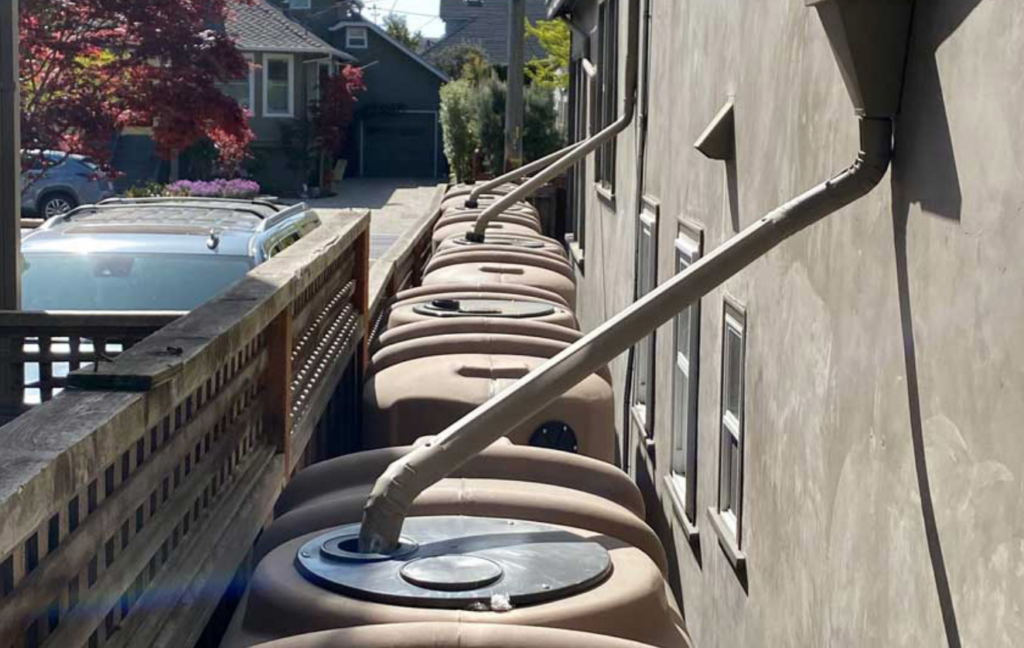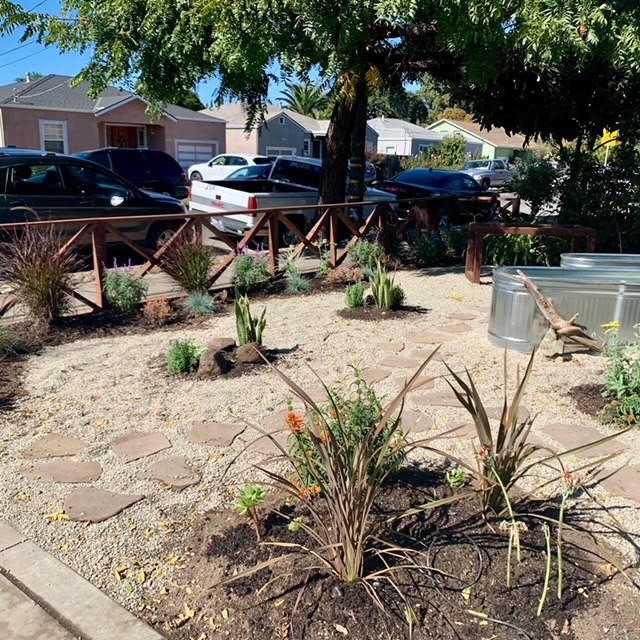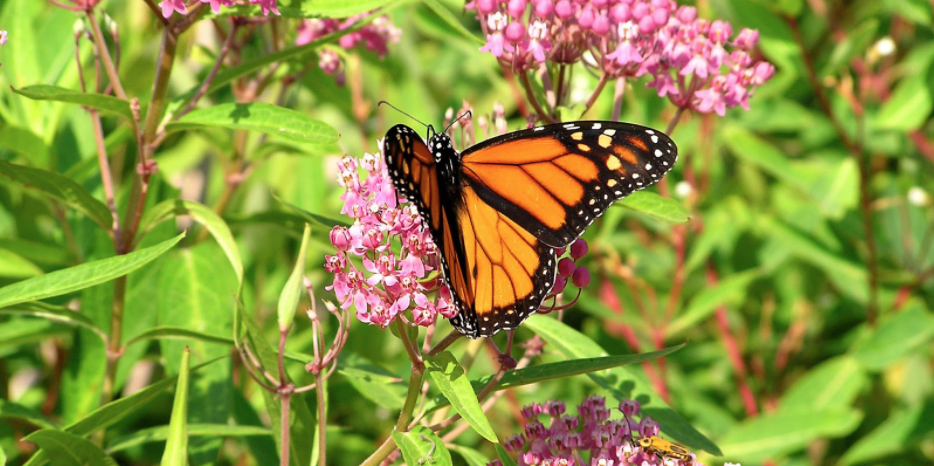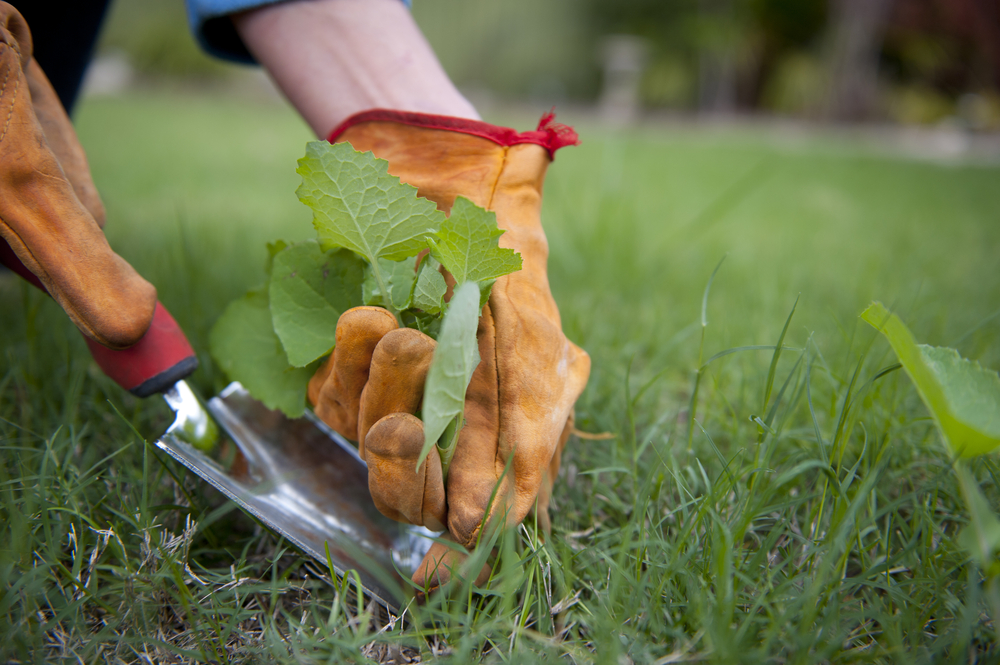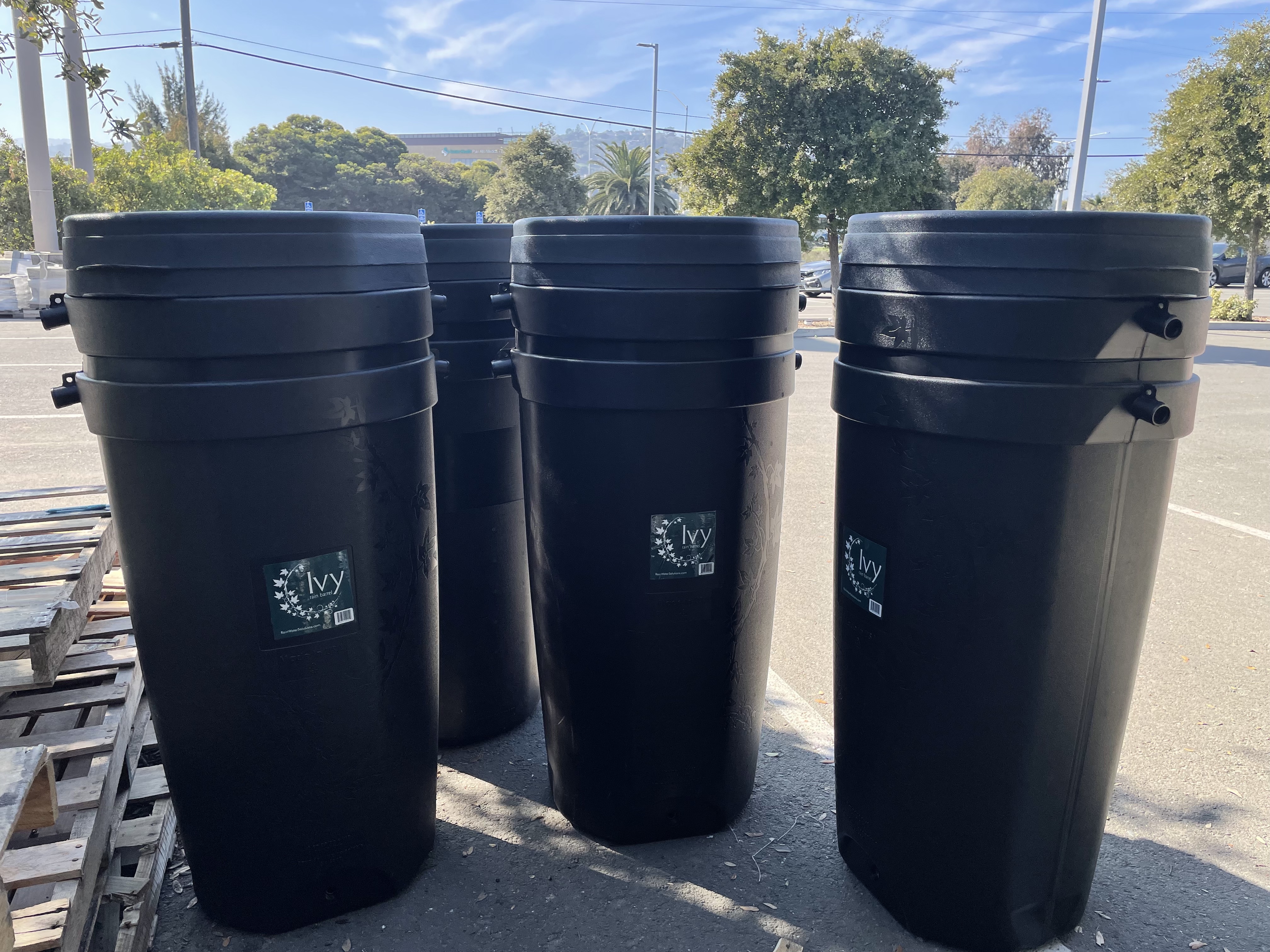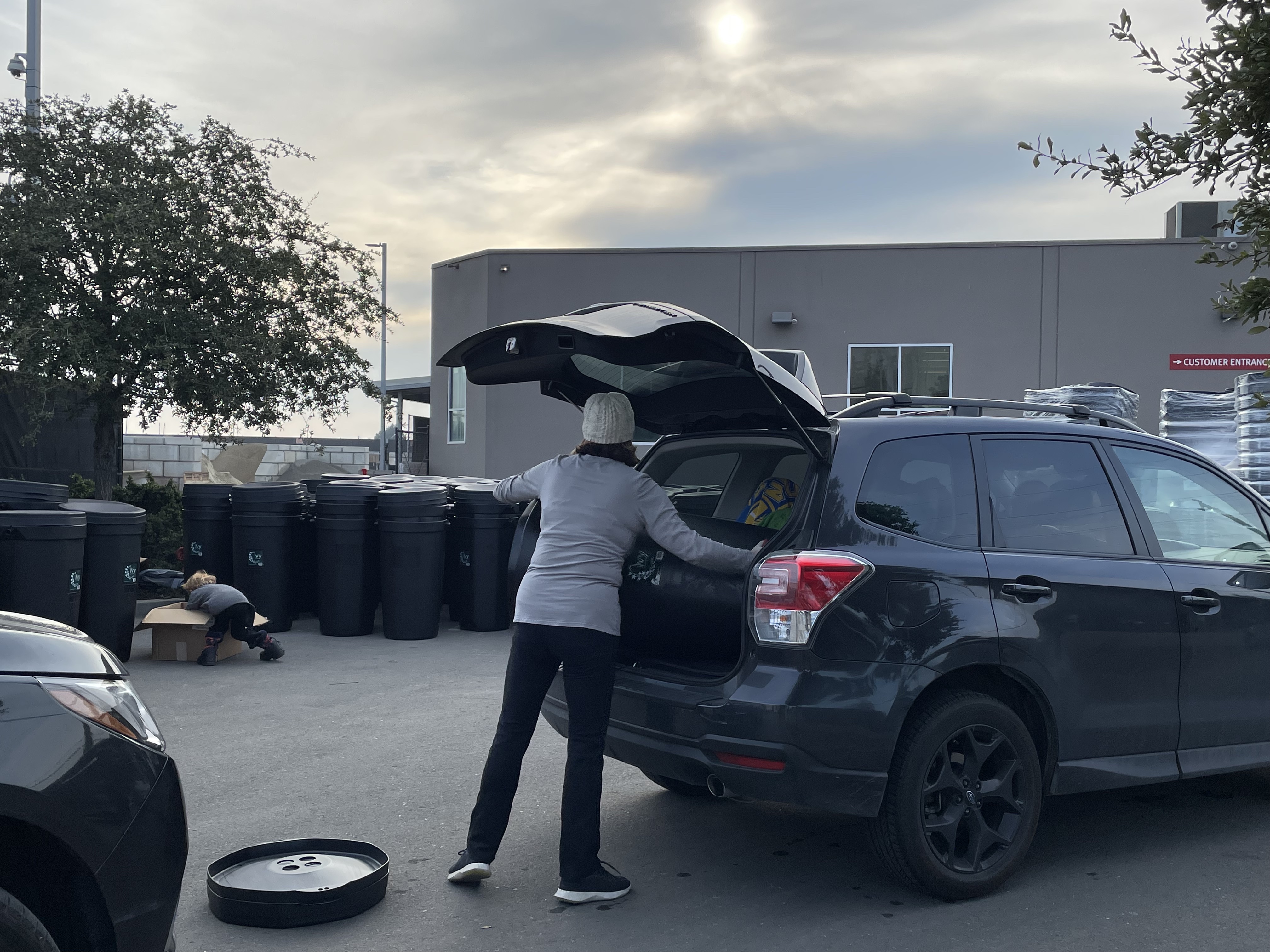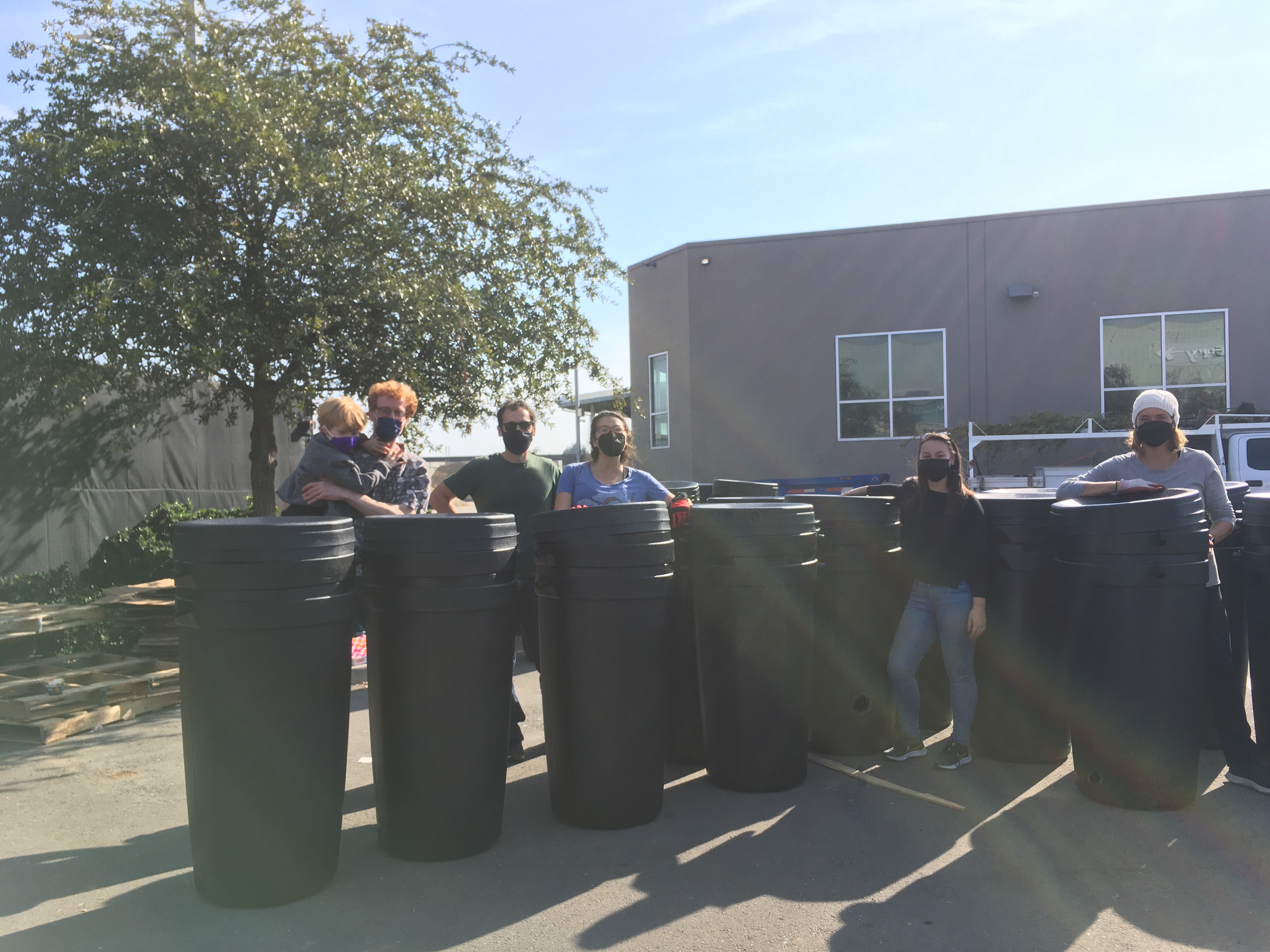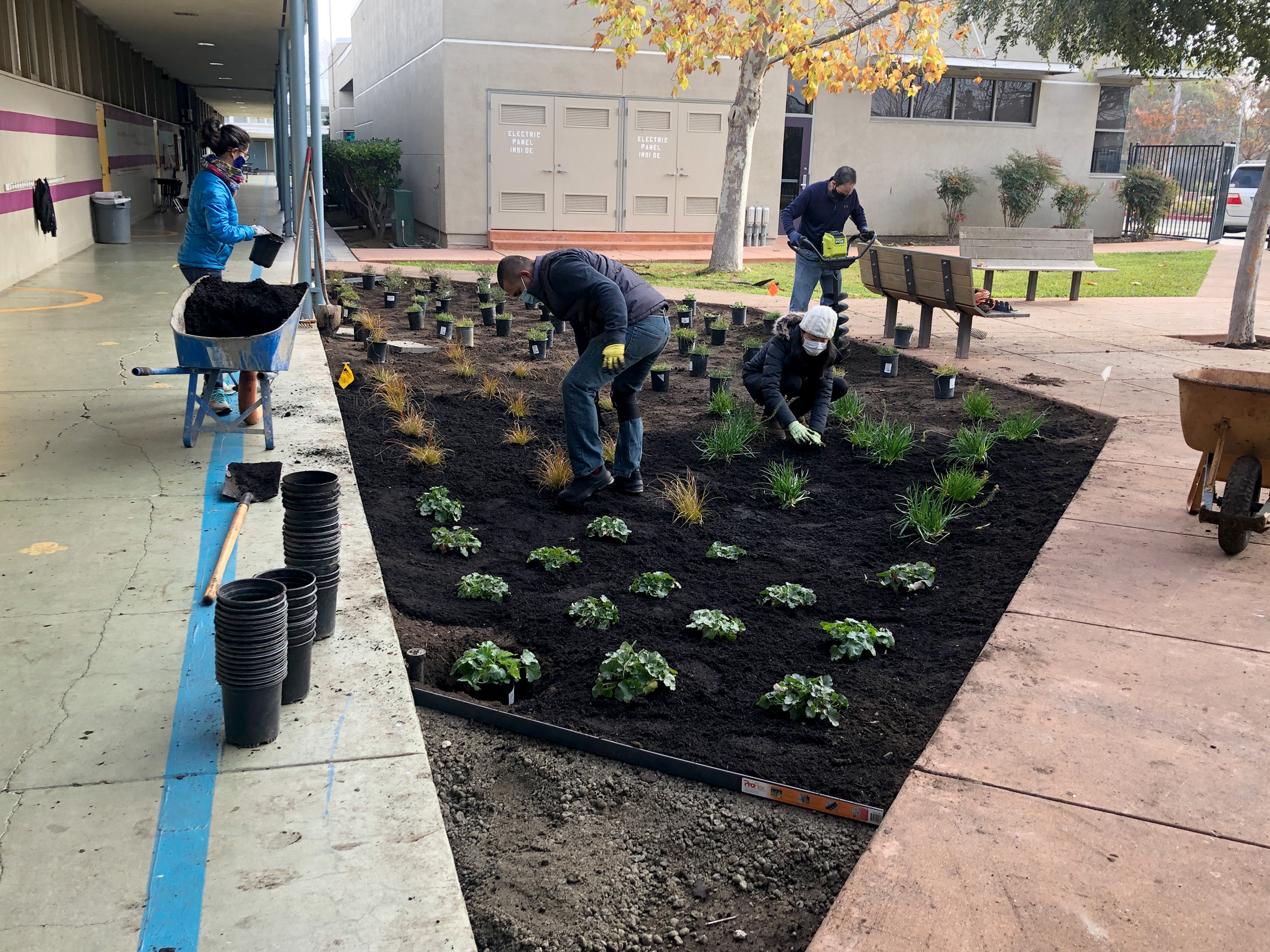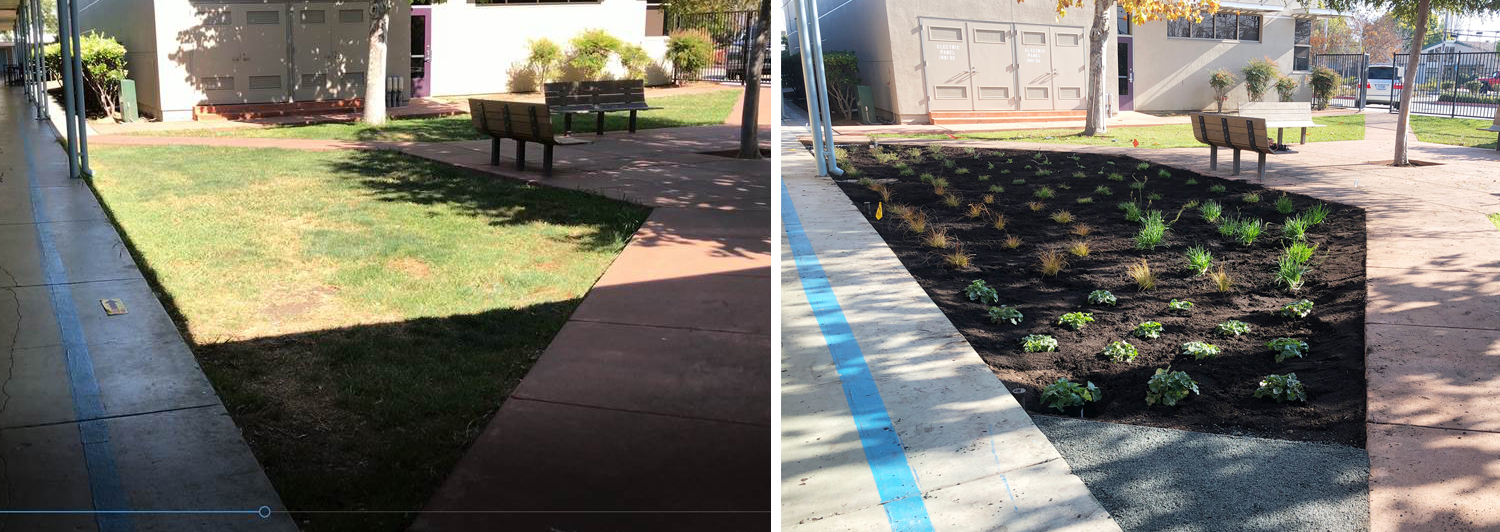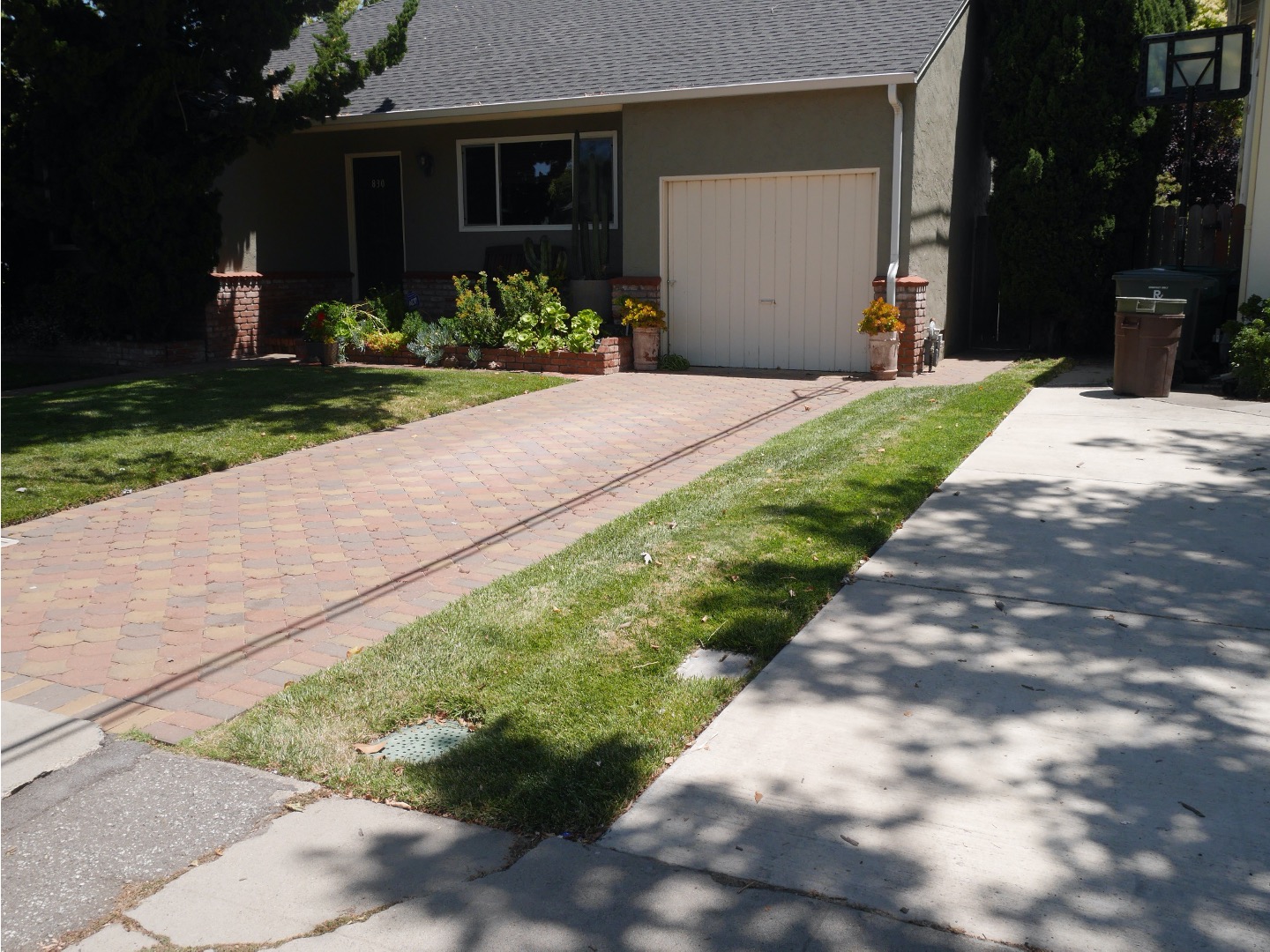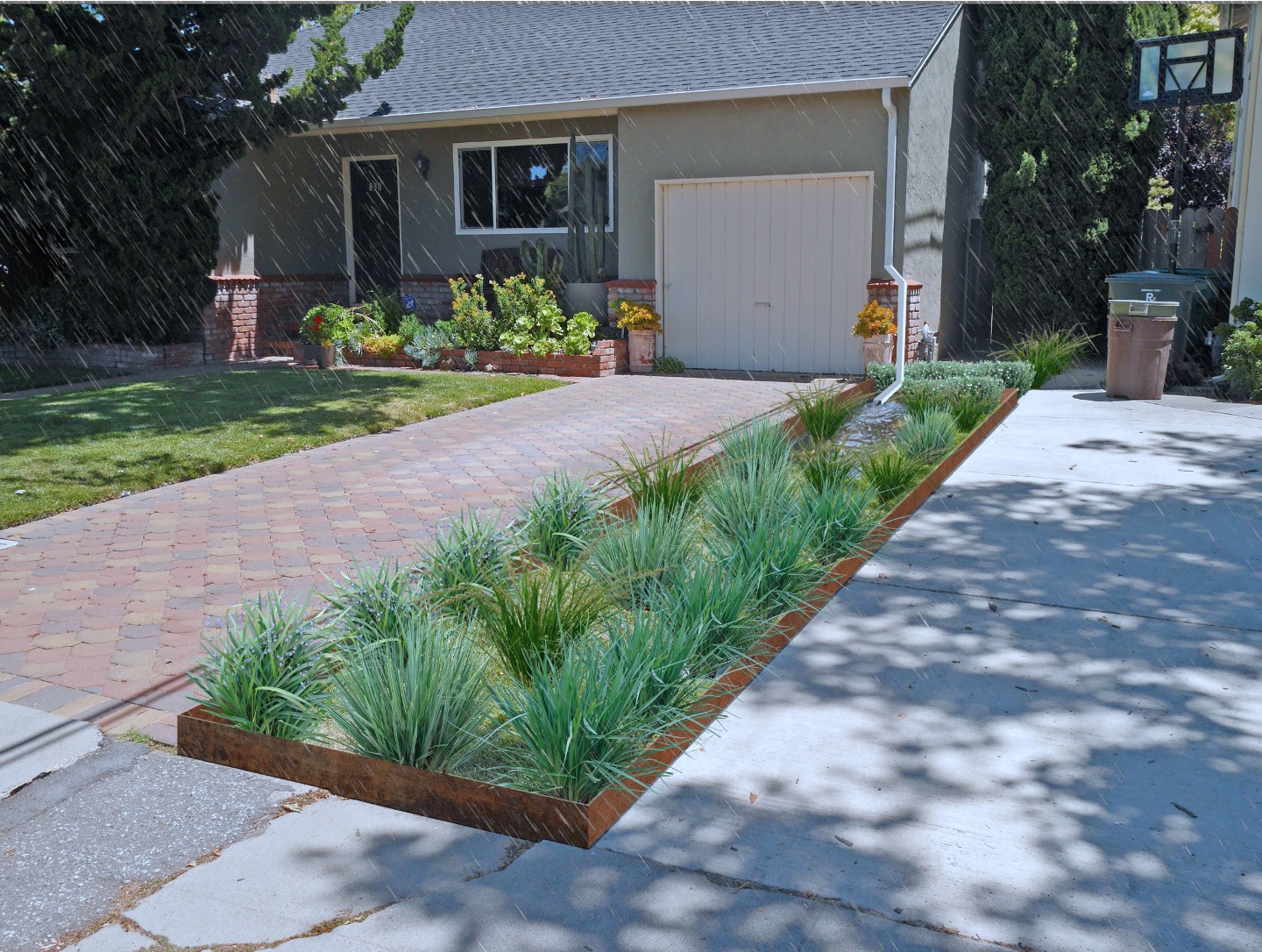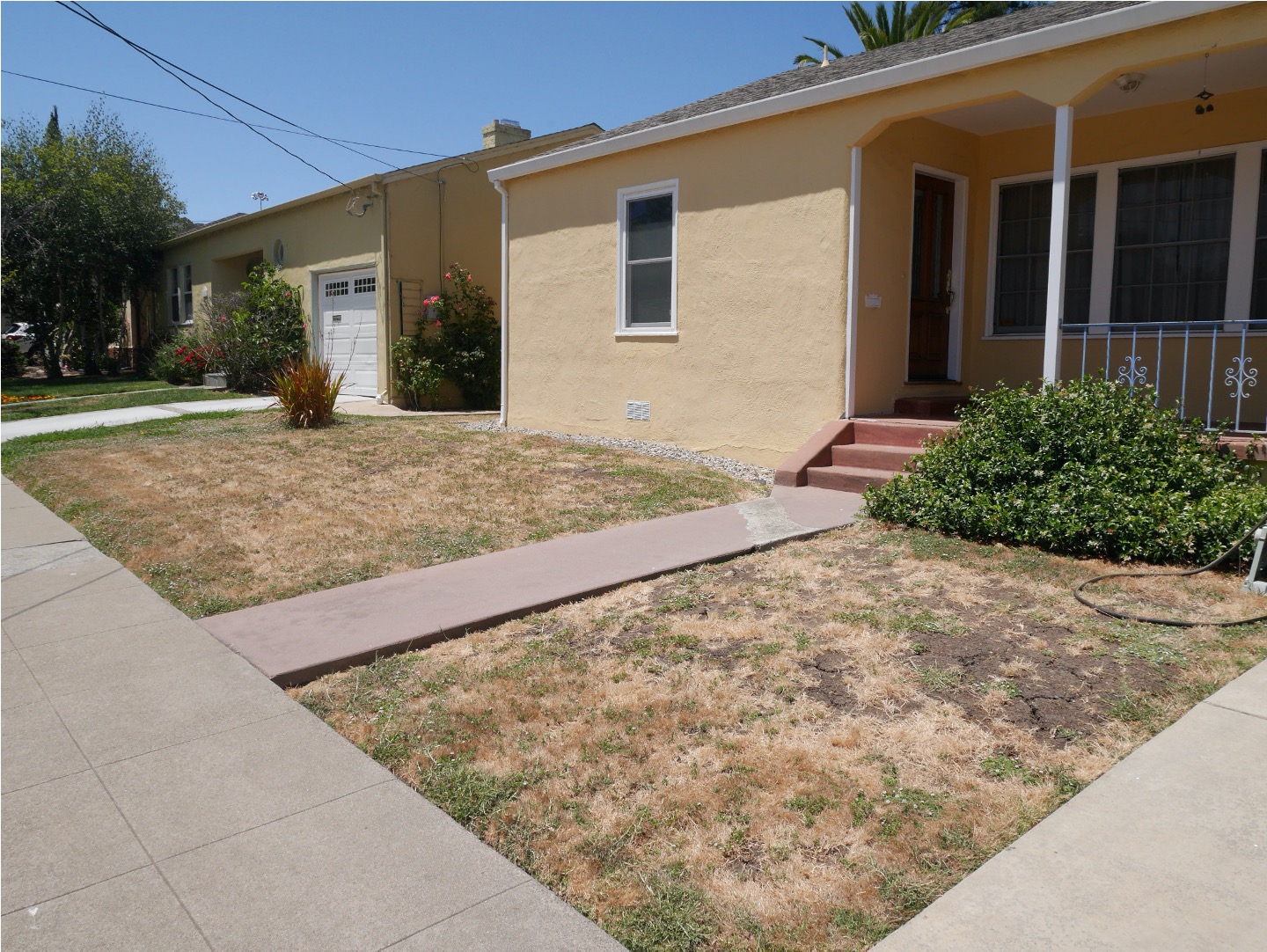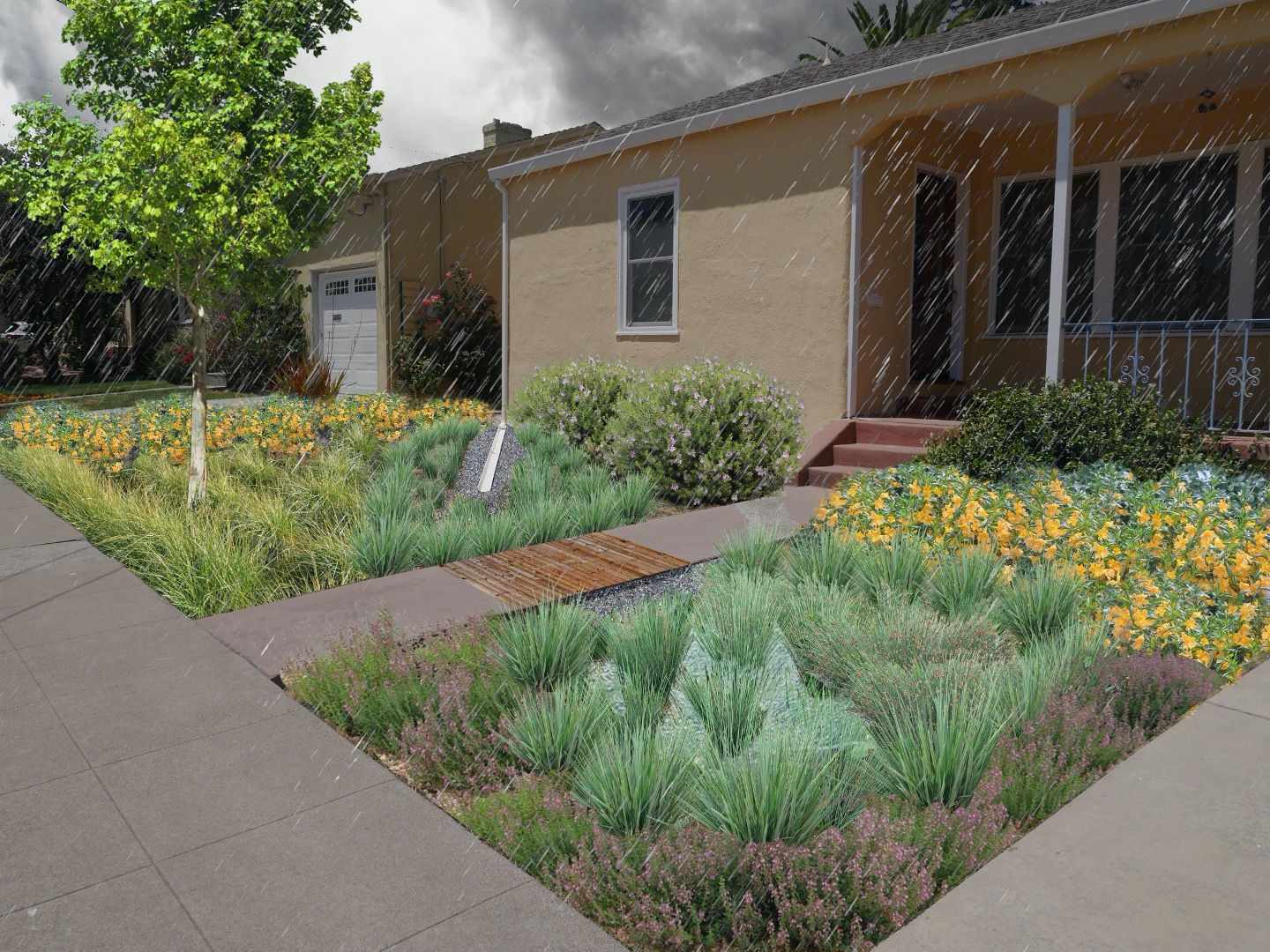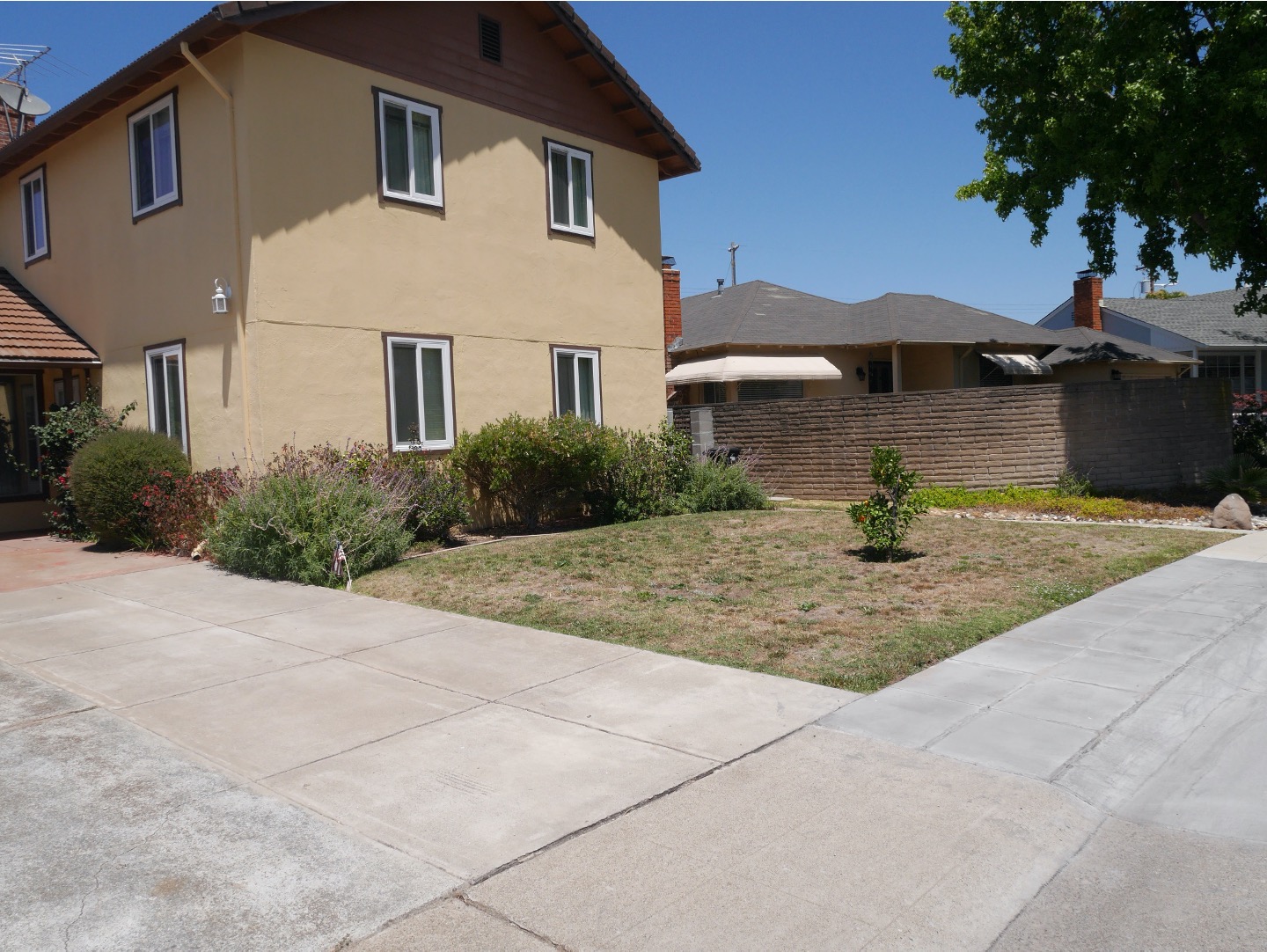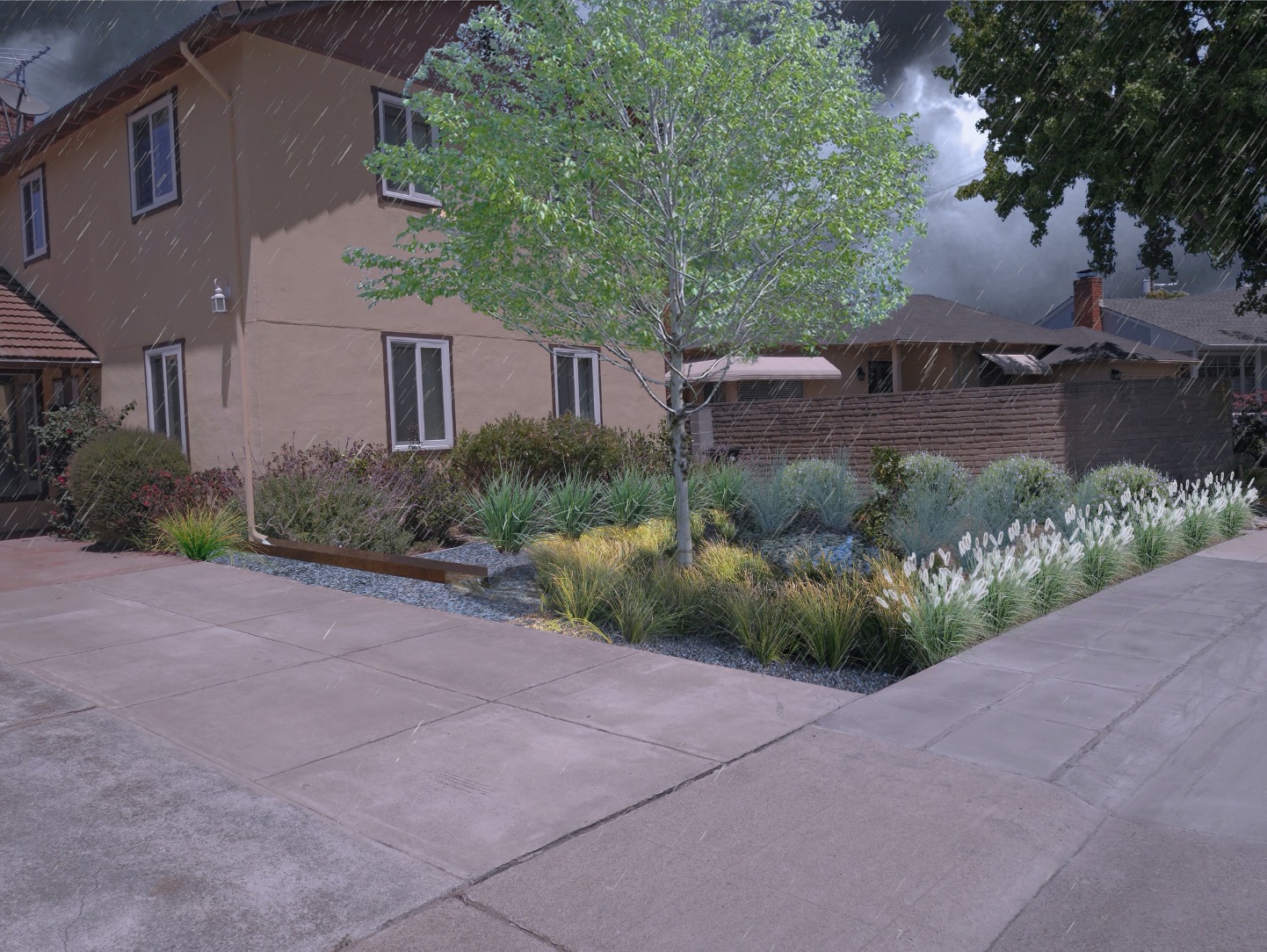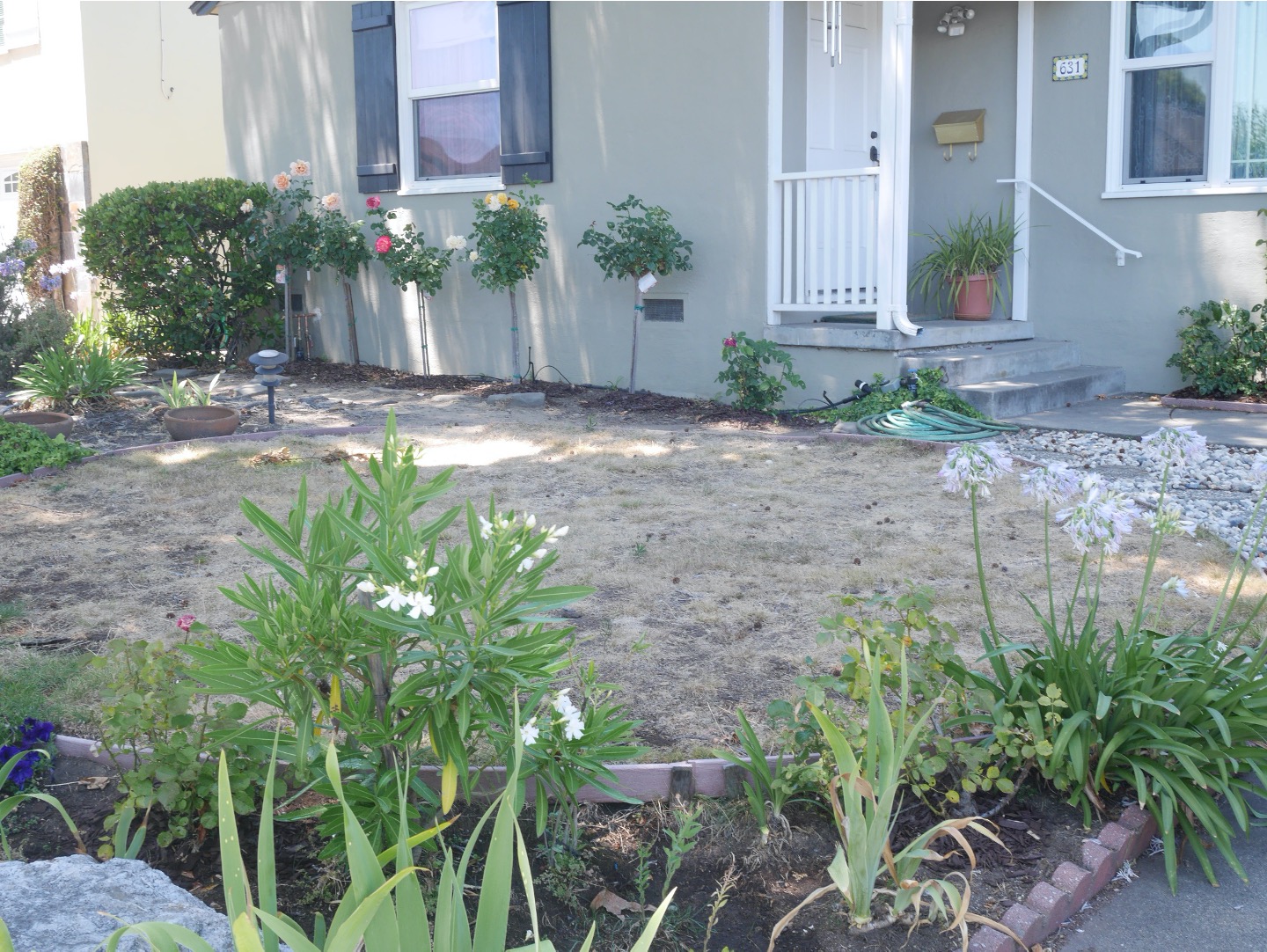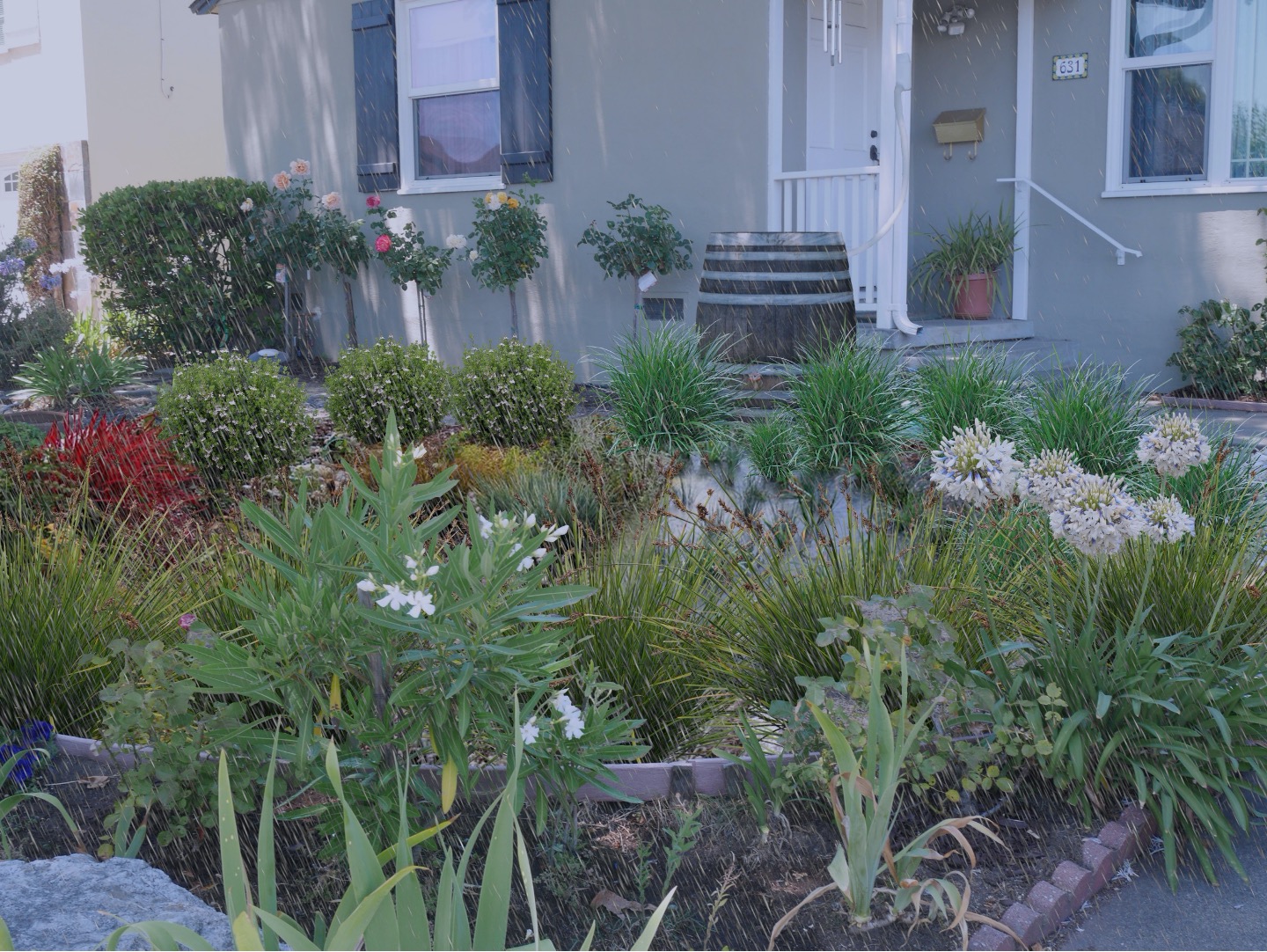While the intense storms that have been pouring it on us this year may ease the severity of our statewide drought, intense storming also poses a significant threat to the health of our local waterways. Heavy flows of stormwater runoff can transport harmful pollutants such as litter and animal waste from our urban landscape into our local waterways at an alarming rate.
It is more important than ever for our community to implement practices that can help us capture rainwater and prevent stormwater pollution. Luckily, rain barrels and rain gardens are great ways to capture and manage stormwater that flows from buildings and other hard surfaces before it goes down our untreated storm drains and into our waterways.
Schools are perfect locations to incorporate these rainwater harvesting features that serve to conserve water, reduce runoff, and improve stormwater quality in our urban environments, all while educating the youth on stormwater-friendly practices. Click here to learn more about Flows To Bay’s efforts to create rainwater resilient schools in partnership with the San Mateo County Sustainable and Climate Ready Schools Partnership Network.
Last year, Flows To Bay partnered with Half Moon Bay High School (HBHS) to install a rain barrel in front of the school. The project served as an opportunity for the school to increase their stormwater capture capacity and teach their students about the importance of rainwater harvesting and stormwater pollution prevention.

Half Moon Bay High School’s Rainwater Harvesting Project
Joseph Centoni, a dedicated Biology, Marine Ecology, and AP Environmental Science Teacher at HBHS, and a group of his AP Environmental Science students led the rain barrel planning and installation. Before installing the rain barrel, the students also created a rain garden, a shallow landscaped depression that captures, cleans, and absorbs stormwater runoff, in the front of the school. The result of all their efforts was a newly installed rain barrel that feeds water into the native drought-tolerant rain garden right next to it.
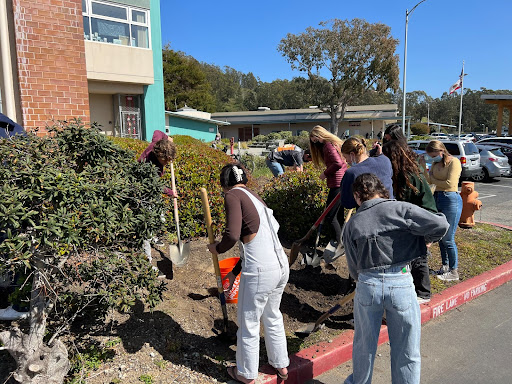
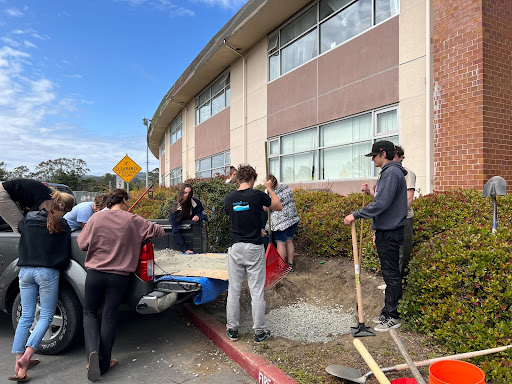
“Students were involved in the installation, especially setting up the overflow area connected (rain garden), and they set the base. A few (students) really advocated for getting the rain barrel installed.”
Joseph Centoni, HBHS
Benefits of Stormwater Capture
Before they added these green infrastructure elements, Joseph said the school’s rain gutters just drained to the street, so by capturing runoff from the nearby roof, they will help reduce the flow of stormwater runoff that can carry pollutants into storm drains and then into our local creeks, the San Francisco Bay, and the Pacific Ocean.
Hands-on Curriculum
This rainwater harvesting project allowed the students to be directly involved in the installation efforts and gain hands-on experience that deepened their knowledge of stormwater pollution prevention. Joseph mentioned that the topics of rainwater harvesting and stormwater pollution prevention do come up in AP Environmental Science, but they are not a core part of the curricula. This project allowed his students to understand these topics on a practical level.
The project also helped them develop new skills. Joseph noted that some students had no idea how to do any kind of plumbing at all before the project, but they embraced the learning experience and put all the pipes together themselves.
Students as Sustainability Communicators
The students’ hands-on involvement in the project not only helped them learn the importance of rainwater harvesting, but also encouraged them to share this knowledge with their parents and peers. As sustainability communicators, these students can continue to educate others in the community about their project and the importance of rainwater harvesting.
Visualizing Change
Joseph emphasized the importance of their careful decision to place the barrel in the front of the school. He said there are locations on campus that may have been easier for installation but would not have much use for the water. The front of the school has perfect use for their rain garden project and also delivers extra benefits.
His AP Environmental Science students designed the informational signage out in front of the school that describes the project and features their artwork. Both the project and the signage are highly visible to the Half Moon Bay community and can be the catalyst for important conversations about stormwater management.

“Now that we have some of these (rain barrels) around, it’s catching on.”
Joseph Centoni, HBHS
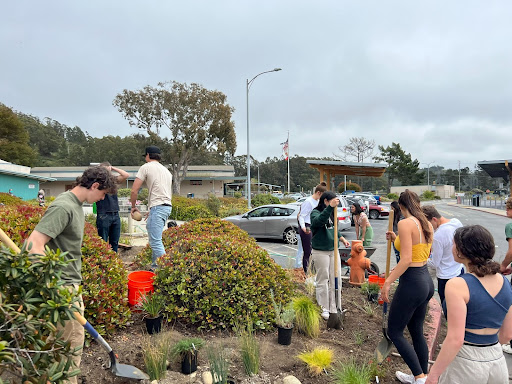
HBHS and Cabrillo Unified Are Really Pouring It On
HBHS and the entire Cabrillo Unified School District are really pouring it on with their sustainability initiatives, and it’s all about collaboration! Joseph is a part of a fairly new district-wide sustainability committee that inspired him to take on this rainwater harvesting project at his school. As Joseph said, people must be catching on, because they currently have a rainwater harvesting project at every school in the district!
Stormwater pollution prevention starts with you! Not sure where you or your school should start? Flows To Bay is here to help! Reach out to Flows To Bay (info@flowstobay.org) and we’ll help you get set up with a rain barrel or rain garden project on your campus.
